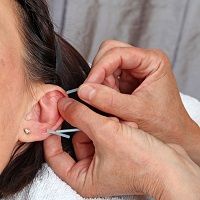Article
Acupuncture Does Not Reduce Pain for Women with Fibromyalgia
Author(s):
Acupuncture, along with two other pain relief methods, proved to be insufficient in providing the analgesia that patients with fibromyalgia crave.

Acupuncture, along with two other pain relief methods, proved to be insufficient in providing the analgesia that patients with fibromyalgia crave.
Finding an effective and reliable pain relief strategy for patients with fibromyalgia has been a difficult challenge. Research has consistently shown positive results with exercise, but potentially addictive opioids continue to be a prominent option. A study conducted in Brazil looked at three forms of alternative medicine that are believed to relieve pain. However, as described in the Journal of Integrative Medicine, they may not be beneficial at all.
The researchers focused on acupuncture, electroacupuncture (acupuncture with a mild electric current), and moxibustion (heat therapy by burning the herb mugwort). The three traditional Chinese medicine approaches did not prove to improve either pain or quality of life for fibromyalgia.
- MD Magazine is on Facebook, Twitter, Instagram, and LinkedIn!
A total of 30 women with fibromyalgia and an average age around 47 were enrolled during the study from May 2010 to April 2012. Each patient had a pain-pressure threshold (PPT) of more than 4 kg/cm². The cohort was divided and the patients received either acupuncture, electroacupuncture, or moxibustion for 30 minutes, once a week for eight weeks.
The acupuncture points included:
- Neiguan (PC6)
- Hegu (LI4)
- Yanglingquan (GB34)
- Sanyinjiao (SP6)
- Taichong (LR3)
Before and after each treatment, the patients reported their PPTs, Wong-Baker Faces Pain Scale (WBFPS, for pain intensity), and Medical Outcomes Study 36-item Short Form Health Survey (SF-36, for quality of life).
By the end of the eighth session, there was no significant improvement in pain in any of the treatment groups. Although recent evidence showed that acupuncture could help children with chronic pain, it does not appear to be an effective strategy in patients with fibromyalgia.
“Significant improvement of quality of life was perceived in vitality (after acupuncture treatment) and in mental health (after electroacupuncture and moxibustion treatments),” the authors specified.
Granted, the study consisted of a limited amount of participants and larger cohorts are necessary to confirm the findings. But if you were on the fence about acupuncture, you may want to take this analysis into consideration.
What to Read Next >>> New Headgear Device Delivers Pain Relief for Fibromyalgia and Migraine




